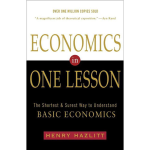Housing productivity is an essential factor in addressing the ongoing housing crisis that has left many Americans struggling with affordability. As land-use regulations and NIMBY (Not In My Backyard) policies tighten their grip on available land, the construction industry faces significant challenges that hinder its ability to meet demand. This stagnation not only affects home prices but also stifles innovation and efficiency in building practices. A recent study highlights how these regulatory barriers have transformed housing development into small-scale, bespoke projects, moving away from the mass production strategies that once drove affordability. To tackle the complexities of the housing market effectively, we must revitalize housing productivity and consider its implications for the overall economy and consumer welfare.
When exploring the theme of housing effectiveness, it’s crucial to understand the role it plays in mitigating the housing affordability dilemmas faced by many. Current trends show a disconnection between housing demand and supply, largely driven by restrictive local policies that protect neighborhood interests. These regulations, known as NIMBY measures, often inhibit larger construction projects that could otherwise benefit a burgeoning population. As a result, the construction sector has shifted towards smaller, custom builds, curbing the industry’s potential for cost savings and efficiency. Recognizing these dynamics is vital for fostering a more productive housing sector that can better serve diverse community needs.
The Impact of NIMBY Policies on Housing Productivity
“Not in My Backyard” (NIMBY) policies have become a significant barrier in addressing the housing productivity crisis in America. These local regulations often stem from community resistance to developments that they perceive as a threat to their property values or neighborhood character. Unfortunately, such policies limit the ability of large construction firms to build efficient, cost-effective housing solutions on a mass scale. With the constraint of involving multiple community stakeholders in the approval process, projects become smaller and more complex, thus inhibiting productivity and increasing costs. As a result, these constraints lead to reduced housing supply, exacerbating the existing housing affordability crisis.
In examining the historical trends, it’s evident that productivity in the construction sector was on an upward trajectory until the rise of NIMBYism around the 1970s. Prior to this shift, large-scale projects flourished, significantly contributing to the housing supply and keeping costs manageable for homeowners. As land-use regulations proliferated, the construction industry saw a marked decline in both productivity and innovation. Builders, burdened by restrictive zoning and design requirements, found themselves unable to leverage economies of scale that are vital in large projects, thereby contributing to the escalating home prices that many Americans struggle with today.
Frequently Asked Questions
How do NIMBY policies impact housing productivity in the construction industry?
NIMBY (Not In My Backyard) policies significantly hinder housing productivity by imposing strict land-use regulations that limit the scale and type of housing projects. These regulations prevent builders from implementing mass production techniques that could lower costs and increase efficiency. As a result, housing projects become smaller and more complex, leading to higher overall costs and decreased output in the construction industry.
What role does land-use regulation play in the housing crisis?
Land-use regulation is a crucial factor exacerbating the housing crisis. By restricting development and enforcing stringent zoning laws, these regulations limit the supply of new housing units. This reduced supply contributes to rising housing prices, making affordability a major issue for many Americans, especially in urban areas where demand is high.
How has housing affordability been affected by construction productivity trends?
Housing affordability has deteriorated as construction productivity has stagnated since the 1970s. The decline in productivity, driven by restrictive land-use regulations and less innovative construction methods, has resulted in higher costs for new homes. As new single-family homes become increasingly expensive, a larger segment of the population finds homeownership unattainable.
Why is the construction industry’s productivity lower compared to other sectors?
The construction industry’s productivity has lagged compared to other sectors due to several factors, including increasing land-use regulations, which prevent builders from achieving economies of scale. Unlike manufacturing, where mass production is standard, housing construction has become fragmented, leading to smaller projects that are less efficient and innovative. This stagnation has a direct impact on housing affordability and availability.
What historical trends have influenced construction productivity in relation to housing production?
Historical trends indicate that construction productivity was thriving from 1935 to 1970, but it began to decline sharply as land-use regulations intensified. This period marked a shift where larger construction projects diminished, leading to significant reductions in output per worker. The contrast with manufacturing sectors, which continued to innovate and improve productivity, highlights the construction industry’s unique challenges.
How do housing policies affect intergenerational wealth transfer in real estate?
Housing policies, particularly those that restrict new construction through NIMBYism, disproportionately affect younger generations seeking homeownership. These policies have led to stagnation in housing supply, driving up prices and creating an intergenerational wealth gap. Older homeowners accumulate significant wealth, while younger individuals struggle with affordability, leading to a massive transfer of housing wealth to established homeowners.
What impact do construction patents have on housing innovation?
The decline in construction patents since the 1970s indicates a slowdown in innovation within the housing sector. As firms focus on complying with complex land-use regulations instead of exploring new technologies, the potential for cost-saving innovations diminishes. This stagnation in patenting correlates with reduced competitiveness in the construction industry and contributes to ongoing challenges in housing affordability.
How can increasing housing productivity help address housing affordability challenges?
Increasing housing productivity can combat housing affordability challenges by enabling builders to produce homes more efficiently, ultimately lowering construction costs. By reforming land-use regulations, allowing for larger scale projects, and promoting innovative building practices, the construction industry can increase supply, improve affordability, and help alleviate the current housing crisis.
| Key Points | Details |
|---|---|
| Housing Affordability Crisis | Home prices have more than doubled since 1960, pushing ownership out of reach for many. |
| Impact of Land-Use Regulations | NIMBY land-use policies have led to decreased productivity and innovation in housing. |
| Declining Construction Productivity | Between 1970 and 2000, productivity in construction fell by 40% despite economic growth. |
| Project Size and Scale | Today, most housing is built by small builders, in contrast to large projects in the past. |
| Innovation Stagnation | Patenting in construction has declined since the 1970s, diverging from other sectors. |
| Generational Wealth Transfer | Younger generations face reduced housing wealth compared to older generations. |
Summary
Housing productivity is crucial in understanding the current housing affordability crisis in America. Studies reveal that restrictive land-use regulations, often referred to as NIMBYism, are a significant contributing factor to the stagnation of productivity and innovation within the construction sector. This stagnation has led to rising costs of new homes, making it increasingly difficult for younger generations to access home ownership. By exploring the impact of these regulations on project size and innovation, we can better comprehend the barriers to achieving a more productive housing market and identify potential pathways for reform.










